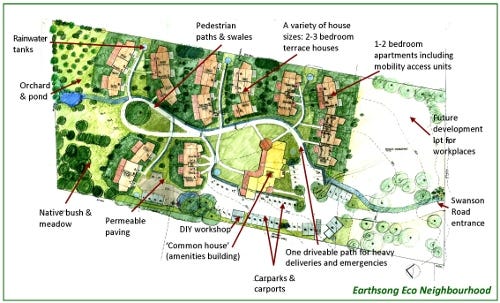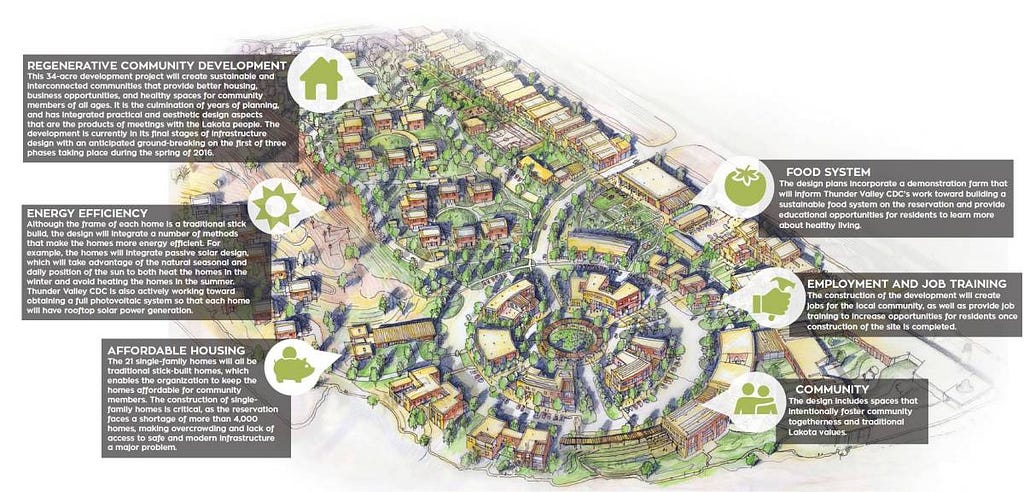Latest news about Bitcoin and all cryptocurrencies. Your daily crypto news habit.
All our actions affect the sustainability, resilience and health of the communities in which we live, work and learn. The relationships we create and the collective vision of the future we create with our communities will shape whether they are sustainable and capable of regeneration. The community level is where we can all contribute to the emergence of a regenerative culture. The nested networks of interactions we co-create shape the present and future of our community and its participation in local ecosystems. [This is an excerpt of a subchapter from Designing Regenerative Cultures,published by Triarchy Press, 2016.]
Sustainable community design is about becoming conscious of these nested networks of relationships and processes and then optimizing them in ways that support the health of the community and all its participants. The aim is to synergistically integrate the social, ecological, economic and cultural (worldview/narrative) dimension of community, creating a culture of collaboration and solidarity capable of being regenerative in the long term. Communities that succeed in this are thriving, healthy and inspiring places that offer an exceptional quality of life to their residents while having a positive impact on the local and regional environment.
 Example (Source) — this image is not in the book
Example (Source) — this image is not in the book
Understanding ecological communities (ecosystems) better can help us fit in and optimize human communities in symbiosis with the rest of life. Rather than maximizing the numbers and short-term success of one individual species, ecosystems tend to optimize the whole system in ways that support diversity, health, resilience and the capacity for regeneration of the ecosystem as a whole. The most successful and long-term strategy for an individual or community is to emulate nature’s fundamentally collaborative pattern of whole-system optimization and mimic its processes and relationships. Long-term success and vitality of all participants depends on the health of the whole system.
How can we create human settlements based on learning from the patterns of organization and collaboration that we find in ecosystems?
Professors Declan Kennedy and Margrit Kennedy dedicated most of their professional and community lives to the exploration of sustainable community design and sustainable regional economic exchange mechanisms. Both worked in academia as professors for Urban Planning in Berlin and simultaneously experimented with sustainable community design within the ‘Lebensgarten’ ecovillage they helped to create in Steyerberg, near Hannover, Germany.
In 1996, an EU-funded project initiated by them investigated many best practice and best process examples of community planning across Europe. The project resulted in their book Designing Ecological Settlements (Kennedy & Kennedy, 1997) in which they propose an ecologically informed standard for redesigning community. Here are some of the questions they invite us to ask:
How can we design ecological and sustainable settlements?
How are we celebrating and nurturing human and natural diversity in our community?
How can we focus our community around a human scale of personal interactions and collaboration between people so residents can form personal bonds with each other?
How can we create a settlement of short distances and integrate important community functions at a walkable scale?
How can we use as little space as possible for our human infrastructures and create high-density living spaces that integrate nature into the community fabric?
How can we encourage community participation and inspire all community members to co-create the collaborative advantage of responsible participation?
How can we use local and regional renewable energy resources, and energy-saving design, to create an energy-efficient settlement?
How can we create a climate-responsible, emissions-free community?
How can we create a quiet and beautiful settlement?
How can we use integrated design to value water and help to regenerate local watersheds?
How can we create effective patterns of circular resource use at a local and regional scale to make our settlements predominantly waste-free?
How can we design healthy buildings for healthy communities?
How can we integrate living space for native species and productive plants (horticulture, forest gardens, etc.) into the fabric of our settlement?
How can we nurture ecological and social literacy in the community and establish effective processes of creative conflict mediation and resolution?
How can we co-create a guiding community narrative of human values shared by all residents?
These questions challenge us to design our communities as nature. “What unites all these aspects […] is that they strive for […] an optimisation of the whole, rather than a maximisation of individual parts, and thus a new quality of housing and indeed life itself” (Kennedy & Kennedy, 1997, p.211). This optimization of the whole is a crucial lesson in how life creates conditions conducive to life.
Sustainable community and human settlement design based on this systemic ecological insight will help to create communities capable of regeneration, adaptation and transformation. Optimization of the whole goes beyond the immediate concerns of present generations to create abundance for future generations.
Transformative innovation in existing communities means retrofitting design elements inspired by these questions into existing cultural patterns and infrastructures. It is almost impossible (and undesirable) to impose them from above. Policies must encourage and enable citizens to engage in the redesign of their community fabric. A sense of place and sense of community are nourished through participation in these collective visioning processes.
‘Living the questions’ is a community process. The questions above invite us to enter into dialogue and relationship with the people around us and the place we inhabit. They invite the first step of engaging participation and conscious co-creation at the community level. By exploring together how our community might become an example of a regenerative culture, we are giving each other an opportunity to learn together.
This collective journey of learning in itself creates the path towards a community capable of wise decisions and regeneration. Community creates the conditions for the emergence of a regenerative culture. How do we design as nature and in community in elegant adaptation to this unique place and culture? Diverse regenerative cultures can evolve from this question.
[This is an excerpt of a subchapter from Designing Regenerative Cultures,published by Triarchy Press, 2016.]
 Thunder Valley Regenerative Community on Lakota reservation (source), is an example of the kind of settlement described by the Kennedys.
Thunder Valley Regenerative Community on Lakota reservation (source), is an example of the kind of settlement described by the Kennedys.
Nature’s whole system optimization informs community design was originally published in Hacker Noon on Medium, where people are continuing the conversation by highlighting and responding to this story.
Disclaimer
The views and opinions expressed in this article are solely those of the authors and do not reflect the views of Bitcoin Insider. Every investment and trading move involves risk - this is especially true for cryptocurrencies given their volatility. We strongly advise our readers to conduct their own research when making a decision.